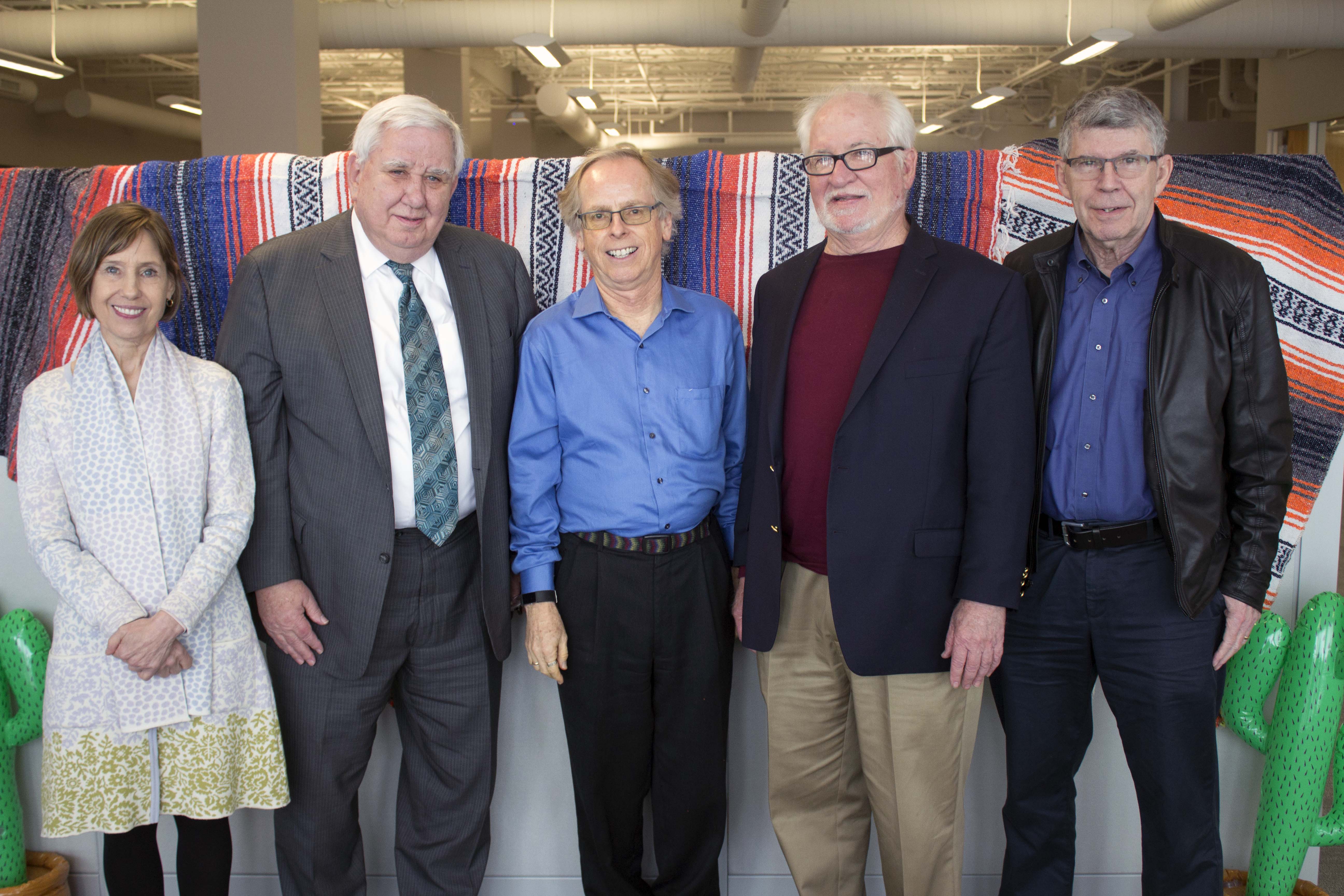Reflections from the Scientific Advisory Council
Published: June 28, 2018

For the past 10 years, a team of seasoned experts in child health has been providing strategic advice for the Michael & Susan Dell Center for Healthy Living (Center). This team, the Scientific Advisory Council (the Council), was comprised of five researchers from across the United States who met annually to provide guidance on the Center’s future direction and development. Learn more about the various members of the Scientific Advisory Council here.
The Council has provided vast recommendations and guidance to help grow the Center to where it is today. In our final advisory meeting the Council reflected on the Center’s past work and future growth, below is what they shared.
What do you think makes the Center unique or different from other research institutions?
Anthony “Tony” Biglan, PhD: Unlike many research institutions, the Center does its research for the purpose of affecting the health of the population. In my view, human well-being will only be advanced through research that is organized to produce practical outcomes.
Russell Luepker, MD, MS: The diversity of health programs among youth. The involvement of the community.
James “Jim” Sallis, PhD: The defining feature of the Center is the focus on improving children’s health. That overall goal is approached in a variety of ways that enhance physical and mental health of youth, drawing on diverse skills, perspectives, and innovations of faculty and staff. It is also unusual to have long-term core support from a funder, which provides a foundation that boosts the success of investigators in obtaining additional funding.
What is the most innovative/interesting thing the Center is currently doing in your opinion?
John Elder, PhD: Both in tobacco and school health, a true application of the socioecological model. A lot of us give that lip service, but rarely do I see the broader, more distal factors (policy, physical environment, etc.) addressed as consistently.
Dr. Biglan: I’m quite encouraged to see the growth in the Center’s efforts to translate public health knowledge into public policy. It is clear to me that the leadership of the Center recognizes that our impact on public health will remain limited if we do not affect policies that affect public health.
Dr. Sallis: The Center is having a substantial effect on the health of Texas youth through statewide projects, such as regular SPAN [School Physical Activity and Nutrition Survey] surveys and CATCH [Coordinated Approach To Child Health] dissemination, as well as excellent relationships with state policy makers. The Center’s involvement in the development of the new medical school in Austin is a rare opportunity to embed public health and prevention in a school of medicine that can hopefully become a model for other medical schools impacting public health prevention. [Dr. Sallis is referring to the MD/MPH dual degree program in collaboration with The University of Texas at Austin Dell Medical School. Learn more about the program here.]
How have you seen the Center grow since you joined the Scientific Advisory Council?
Dr. Luepker: It has grown in the size and scope of its research and training. It has developed collaborations with other departments on campus and in Texas.
Dr. Biglan: It has grown enormously-- from a few faculty and very few students to a full-fledged School of Public Health that is now making important contributions to the scientific literature regarding health into the health of people in Texas and around the world.
Dr. Sallis: Beyond the growth of numbers of students, faculty, and research dollars, I have been pleased with the growing emphasis on dissemination of effective health improvement strategies, dedication to enhancing health equity, and international research and dissemination.
How do you see the Center evolving in the next ten years?
Dr. Biglan: The expansion of public health efforts is vital to achieving a society with far greater health than the one we currently have. I hope that the Center continues its efforts to translate its knowledge into solid public health policy and practice. Such an effort will be facilitated by a thorough analysis of the way in which our economic and political system is evolving and the role that public health can play in guiding that evolution toward the values, policies, and practices that ensure the social and physical well-being of every person.
Dr. Sallis: The Center will need to diversify funding sources even more, probably tackling the tricky task of collaborating with private sector funders and partners. The emphasis on health equity will need to grow, to counteract national trends working against this goal. There are opportunities for growth in the Center¹s research dealing with environment and policy research, as well as incorporation of technology into intervention, measurement, and dissemination. I expect the Center to build on statewide partnerships, including the state government, to be even more effective in translating research to policy and practice.
Dr. Luepker: It will continue in modest growth and become a leader among the other centers of the SPH.
While the Council’s tenure providing guidance to the Michael & Susan Dell Center for Healthy Living has ended, the Center will continue with its work and legacy. Check back with the Center’s website in the fall to learn more about new Center initiatives for the next five years as they are announced.
Written by:
Natalie Neumann, Faculty Support Graduate Assistant



Discussion